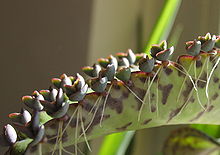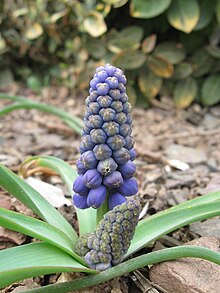**Vegetative Reproduction Mechanisms:**
– Meristem tissue in stems, leaves, and tips enables asexual reproduction.
– Undifferentiated cells in meristem tissue continuously divide for plant growth.
– Adventitious roots develop from stem or leaves, enabling new plant growth.
– Meristem tissues’ ability to divide allows for vegetative propagation.
– Adventitious roots allow new plants to develop from other plant parts.
**Advantages and Disadvantages of Vegetative Reproduction:**
Advantages:
– Offspring are clones of parent plants, passing down favorable traits.
– Economically beneficial for commercial growers to ensure crop consistency.
– Avoids costly process of producing sexual reproduction organs like flowers.
– Allows for faster crop turnover and maturity.
– Offers research advantages in biology and practical usage in afforestation.
Disadvantages:
– Prevents genetic diversity, leading to reduced crop yields.
– Plants are genetically identical and susceptible to pathogenic plant diseases.
**Types of Vegetative Reproduction:**
Natural means:
– Found in herbaceous and woody perennial plants.
– Structural modifications of the stem contribute to vegetative reproduction.
– Any horizontal, underground part of a plant can aid in vegetative reproduction.
– Specialized organs of vegetative reproduction help plants survive harsh conditions.
– Plants that persist through vegetative reproduction form clonal colonies.
**Plants Using Vegetative Propagation:**
– Strawberries and currants use runners.
– Shallots, lilies, and tulips use bulbs.
– Potatoes and yams use stem tubers; sweet potatoes and dahlias use root tubers.
– Gladiolus and taro use corms.
– Apple, elm, and banana trees use suckers.
**Artificial Means of Vegetative Propagation:**
– Cutting involves planting a cut stem or leaf that develops adventitious roots.
– Grafting attaches a scion to the stem of another plant.
– Layering includes bending plant branches to touch the ground for root development.
– Suckering leads to dense mats of new plants attached to the parent.
– Tissue culture involves nurturing plant cells in a sterilized medium to develop plantlets.
This article needs additional citations for verification. (March 2008) |
Vegetative reproduction (also known as vegetative propagation, vegetative multiplication or cloning) is a form of asexual reproduction occurring in plants in which a new plant grows from a fragment or cutting of the parent plant or specialized reproductive structures, which are sometimes called vegetative propagules.




Many plants naturally reproduce this way, but it can also be induced artificially. Horticulturists have developed asexual propagation techniques that use vegetative propagules to replicate plants. Success rates and difficulty of propagation vary greatly. Monocotyledons typically lack a vascular cambium, making them more challenging to propagate.
